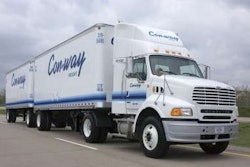A significant percentage of risk for truck drivers comes from the physical toll of sitting in and operating the vehicle, according to a recent Atlas Ergonomics study that shows long hours behind the wheel put certain drivers at especially high risk of developing musculoskeletal injuries.
Of all workers, truck drivers lose the most work days per musculoskeletal disorder incident, Atlas says; this lost time can have a devastating effect on the income of individual drivers, as well as their health, and on their employers’ bottom line. Fortunately, as the Atlas study shows, drivers at highest risk can be identified and protected, simply and cost-efficiently.
As part of its ongoing work with transportation companies, Atlas regularly surveys drivers on their job routines, task characteristics, physical environment, physical characteristics and discomfort. Atlas says it recently pooled and analyzed more than 28,000 of these surveys in an effort to pinpoint specific risk factors.
Atlas says the analysis shows clear relationships between injury risk and the physical characteristics of both the driver and the cab; for example, drivers taller than 6’3” and shorter than 5’7″ have the highest levels of physical discomfort. According to Atlas, the analysis also reviewed relationships between drivers’ discomfort and their age, seniority, weight and gender – with results that sometimes were surprising.
Trends in the data provide valuable insight into reducing ergonomics risk for commercial drivers, says James Landsman, president of Grand Haven, Mich.-based Atlas. “Fortunately, as our historical data and work in transportation have shown, driver risk can be measurably reduced through simple low-cost adjustments to the cab and the drivers’ routines,” Landsman says. “The data show that sound ergonomics can have a direct, significant impact on trucking companies’ financial performance – which executives may find particularly encouraging in this difficult economy.”
Atlas says that due to the breadth of information covered, it is releasing the results of this study in two separate papers. The first, “Transportation Ergonomics: Relationship between Demographics and Discomfort in the Trucking Industry,” highlights the relationship between employee demographics and work-related discomfort. Recommendations and conclusions in the report are designed to help anyone addressing ergonomics concerns in a commercial transportation environment. A free copy of the paper is available at www.atlasergo.com/about_contact.aspx.









